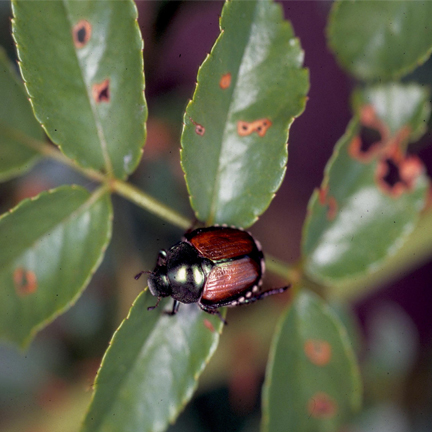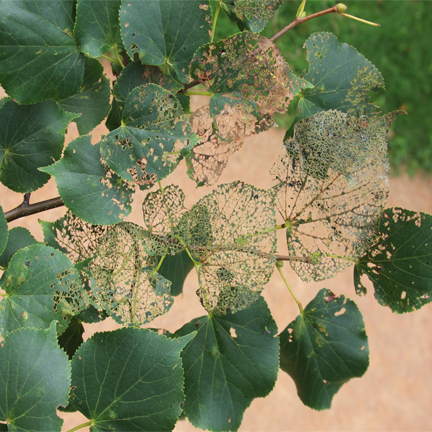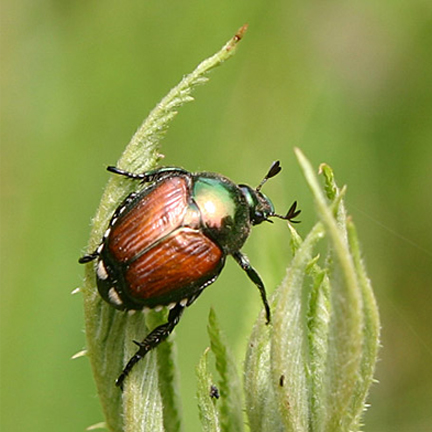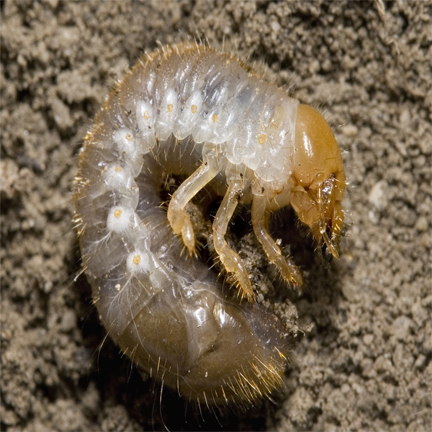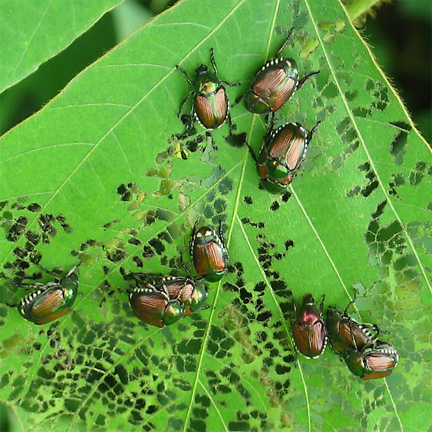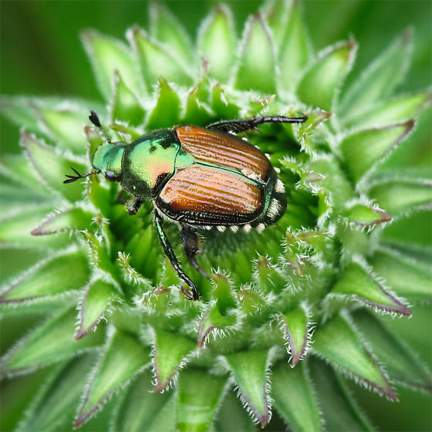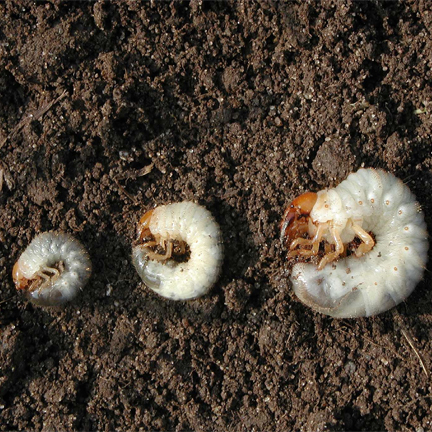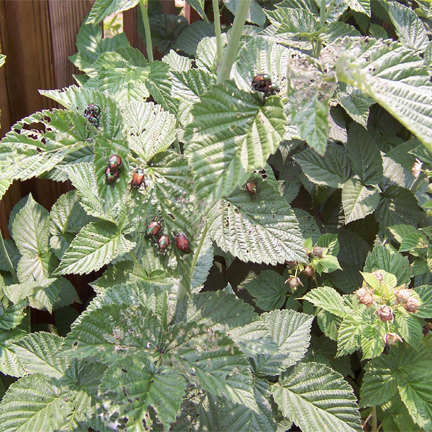The Japanese beetle (JB), Popillia japonica, is a highly destructive plant pest that can be difficult and expensive to manage. Feeding on grass roots, JB grubs, the immature stage of the insect, damage lawns, golf courses, parks and pastures. JB adults consume the foliage, flowers and fruits of more than 300 different ornamental and agricultural plants.
First found in the US in 1916 in a New Jersey nursery, JB has since spread throughout most states east of the Mississippi River. Partial infestations also occur in states such as Arkansas, Iowa, Kansas, Minnesota, Missouri and Oklahoma. Infestations in western states have been eradicated before the insect became established.
HISTORY OF JAPANESE BEETLE IN IDAHO
In 1990 the Idaho State Department of Agriculture (ISDA) began monitoring the state for Japanese beetle (JB), a major invasive insect pest in the eastern US, using pheromone-baited traps. Each summer 200-300 traps have been routinely set out at high risk sites like plant nurseries, box stores and airports. On rare occasions (1992, 1997 and 2011) ISDA trapped single specimens at nurseries, most likely hitchhikers on nursery stock obtained from other states.
During 2012 the first ever detected JB infestation in Idaho was uncovered when traps in downtown Boise collected 56 JB. The following summer, with trap numbers increased to delimit the true extent of beetle establishment 3,058 were captured. By that time a JB eradication program had been put into place. Traps indicated neighborhoods where JB were active and, based on that data, turf in infested locations was treated with pesticides demonstrated to be effective at killing young JB larvae living and feeding in soil.
With funding from the legislature and the help of residents affected by the presence of JB on their properties ISDA was able to successfully carry out the JB eradication program. From a high of over 3,000 beetles in 2013, each year the number of JB captured in survey traps dramatically decreased until 2018 when only 4 were collected. No JB were found in Boise during 2019, 2020 and 2021 and the pest is technically considered eradicated there.
During 2012 a single JB was collected in one of the 5 traps set up in the city of Pocatello. Follow-up trapping uncovered no JB in Pocatello until 2018 when, again, a single individual was captured at a Pocatello park. Monitor traps were increased to 35 in Pocatello during 2019 and 4 beetles were collected (1 from the park where the beetle was found the previous year). In 2020, with trap numbers increased again, to 105, a total of 7 JB were captured in Pocatello – one in the park where JB was trapped during 2018 and 2019 and 6 more from a park to the north of that one. Turf in both parks received pesticide treatment in 2021 – the same protocol that was successfully undertaken in Boise. Plans for 2022 include follow-up trapping and another treatment in one of the parks.
One JB trap in a cemetery in Caldwell, Idaho captured a single beetle during the 2021 field season. Delimit trapping there is planned for summer 2022 to assess the situation.
+ Photo Credits
Banner: (japanese beeltes) Jan Haerer, Creative Commons CC0 Photos: (japanese beetle) Jim Baker, North Carolina State University, Bugwood.org/ (japanese beetle damage) Steven Katovich, USDA Forest Service, Bugwood.org / (japanese beetle) Mike Boone, BugGuide.net, Creative Commons Attribution-ShareAlike 2.5/ (japanese beetle grub) David Cappaert, Bugwood.org/(japanese beetle) David Cappaert, Bugwood.org/(japanese beetle damage) Lynette Elliot, Creative Commons, Bugguide.net/ (japanese beetle) Fln Kynd, Creative Commons, Bugguide.net/ (japanese beetle grub) David Cappaert, Bugwood.org/ (japanese beetle damage) Arthur E. Miller, USDA AHPIS PPQ, Bugwood.org.


